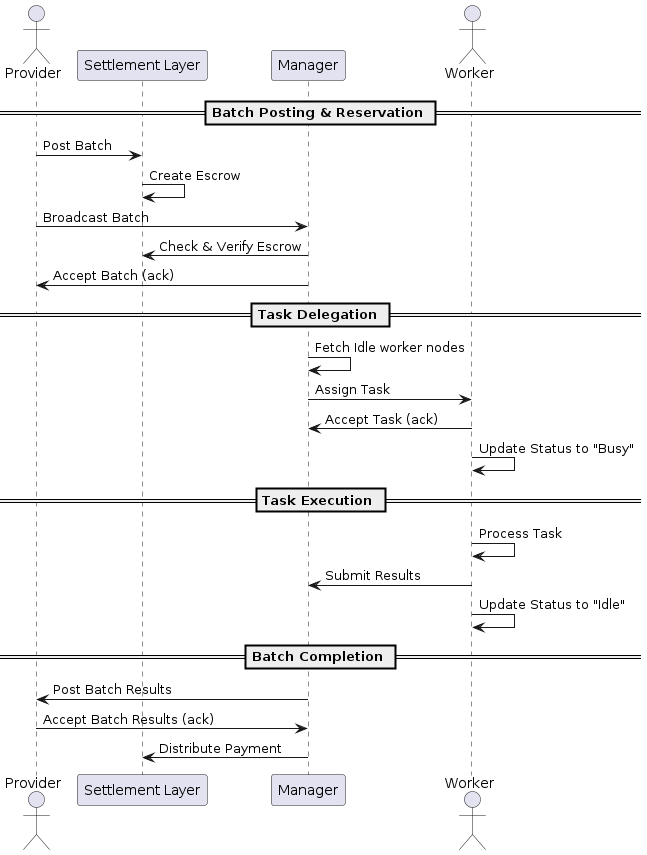Core concepts
The Effect AI protocol is a permissionless protocol that uses blockchain and peer-to-peer (p2p) technology to connect three main entities: worker nodes, manager nodes, and provider nodes. These entities collaborate to supply, assign, and execute human-driven AI tasks within the network. The data lifecycle of the network consists of four main stages: creation, delegation, execution, and once completed, the protocol leverages cutting-edge ZK-rollups to deliver lightning-fast, secure on-chain settlement.
Nodes
The Effect AI protocol consists of three main nodes: worker nodes, manager nodes, and provider nodes. Each node has a specific role and responsibility within the network.
Worker Nodes
Worker nodes are individual participants in the network who complete tasks assigned to them by manager nodes. They use their skills and expertise to complete tasks accurately and efficiently. Worker nodes are rewarded for their work based on the completion of tasks and the quality of their work. They play a crucial role in the completion of tasks and contribute to the overall functionality of the network.
Manager Nodes
Manager nodes are responsible for delegating tasks to worker nodes, managing the distribution of tasks, and ensuring that tasks are completed accurately and efficiently. They use a peer-to-peer (p2p) connection to assign individual tasks to available worker nodes in the network. Manager nodes play a crucial role in the coordination and management of tasks within the network and contribute to the overall efficiency of the network.
Provider Nodes
Provider nodes are entities that create tasks and define the requirements for the tasks they want to create. They submit a batch of tasks to the network, which is then broadcasted to manager nodes for reservation. Provider nodes play a crucial role in the creation and definition of tasks within the network and contribute to the overall functionality of the network.
Data lifecycle
The data lifecycle of the Effect AI protocol consists of four main stages: creation, delegation, execution, and finally, settlement. Each stage plays a crucial role in the overall functionality of the network and ensures that tasks are managed and completed in a decentralized and efficient manner. The data lifecycle of the network is as follows:
- Creation: The first stage in the data lifecycle of the network. Provider nodes define a template for the tasks they want to create, submit the batch of tasks to the network, and create an escrow account holding the necessary funds.
- Delegation: The second stage in the data lifecycle. Manager nodes decrypt the task details and start assigning tasks to worker nodes using a peer-to-peer (p2p) connection.
- Execution: The third stage in the lifecycle of a task. Worker nodes receive tasks from manager nodes, complete them, and submit the results back to the manager nodes for validation.
- Settlement: The final stage in the data lifecycle. Once all tasks in a batch are validated and completed, rewards are distributed to both managers and workers, and the protocol settles the batch on-chain using ZK-rollups.
